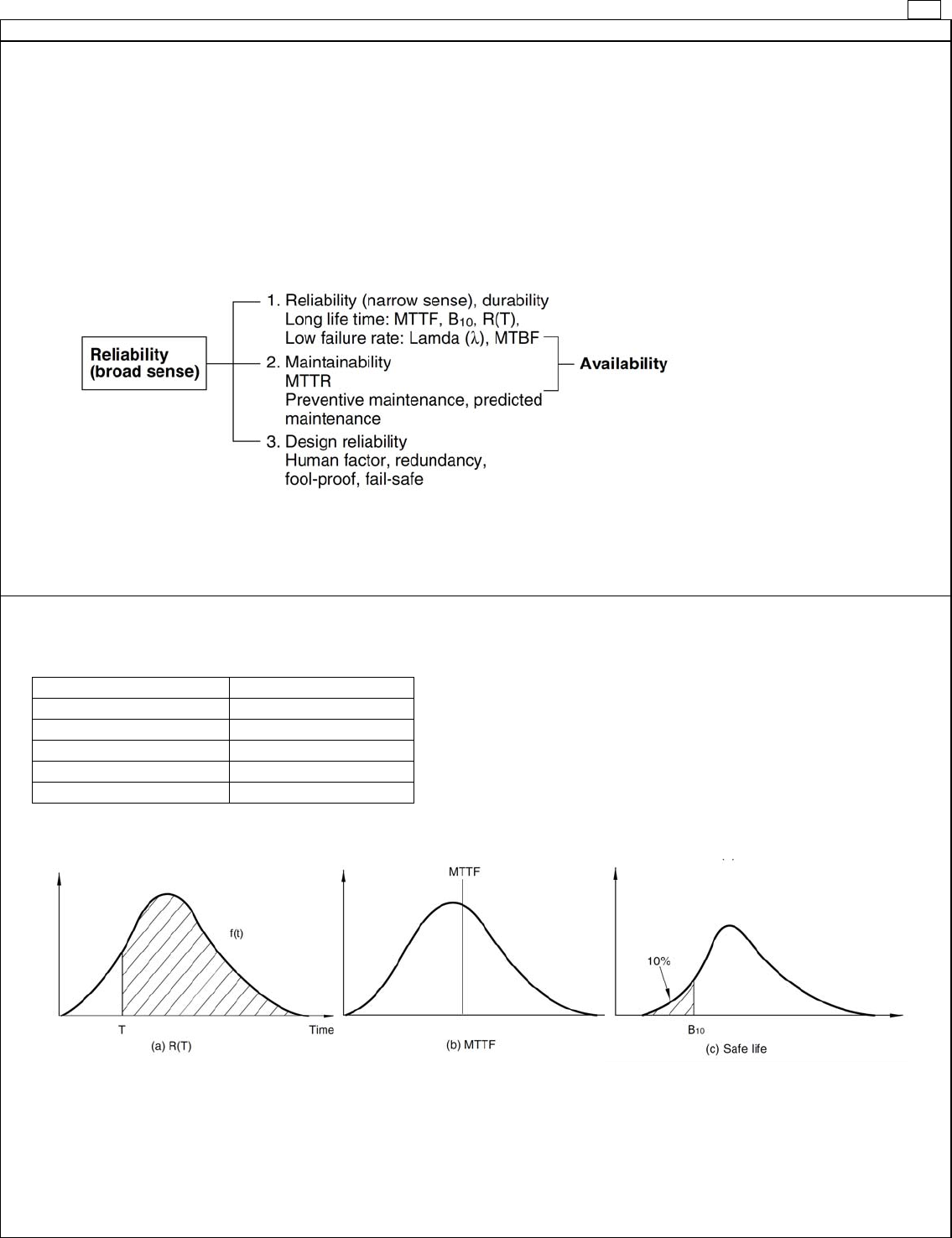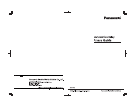
19
19. Reliability
[1] What is Reliability?
1. Reliability in a Narrow Sense of the Term
In the industrial world, reliability is an index of how long a particular product serves without failure during use period.
2. Reliability in a Board Sense of the Term
Every product has a finite service lifetime. This means that no product can continue normal service infinitely. When a product has broken
down, the user may throw it away or repair it. The reliability of repairable products is recognized as "reliability in a broad sense of the
term." For repairable products, their serviceability or maintainability is another problem. In addition, reliability of product design is
becoming a serious concern for the manufacturing industry. In short, reliability has three senses: i.e. reliability of the product itself,
serviceability of the product, and reliability of product design.
3. Intrinsic Reliability and Reliability of Use
Reliability is "built" into products. This is referred to as intrinsic reliability which consists mainly of reliability in the narrow sense. Product
reliability at the user's site is called "reliability of use," which consists mainly of reliability in the broad sense. In the relay industry, reliability
of use has a significance in aspects of servicing.
[2] Reliability Measures
The following list contains some of the most popular reliability measures:
Reliability measure Sample representation
Degree of reliability R(T) 99.9%
MTBF 100 hours
MTTF 100 hours
Failure rate lambda 20 fit, 1%/hour
Safe life B
10
50 hours


















